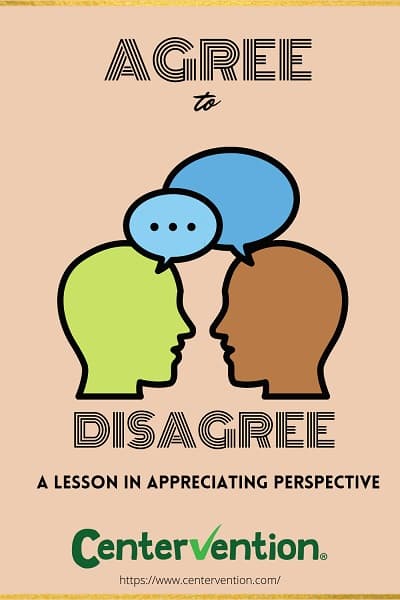It feels good to be right, but sometimes it’s better to simply agree to disagree.
Students’ drive to feel competent often clashes with their desire to be socially appreciated, causing an imbalanced sense of security and confidence and the potential for arguments with peers. Teachers can support students by helping them learn to agree to disagree with respect and by creating a classroom atmosphere that emphasizes curiosity and questioning over the need to be right.
Agreeing to Disagree Acknowledges Different Perspectives
In developing this skill set, it is important to acknowledge the power of perspectives, which are often rooted in individual experience and biases. The book Difficult Conversations describes, “We all have different stories about the world because we each take in different information, and then interpret this information in our own unique ways.” This is especially true when young students exhibit a fixed mindset and struggle to accept the opinions, ideas, or viewpoints of others. As the book explains, “What’s often hard to see is that what the other person is saying also makes sense.” Perspective taking, then, is a part of flexible thinking.
Dr. Donna Hicks discusses the art of disagreeing with integrity as seeking to understand the other side in a conflict. “Believe what others think matters,” Hicks says. “Give them the chance to explain and express their points of view. Actively listen in order to understand them.” When we teach students the process of respectful listening and expression, they are able to find common ground while still appreciating their individual opinions.
Recommended Grade Level: Elementary
SEL Skill(s): Communication, Cooperation, Empathy
Duration: 30 minutes
Materials:
- Paper
- Chart Paper
- Markers or Crayons
- The Blind Men and the Elephant Story (Available when logged in to our Centervention educator account)
- I Agree or I Disagree Worksheet (Available when logged in to our Centervention educator account)
Agree to Disagree Lesson Instructions and Teacher Guide
Learning to appreciate and value the perspectives of others is a hallmark of effective communication and a foundation for flexible thinking and conflict resolution. This lesson will provide students with activities that explore expression, dialogue, and agreeing to disagree with respect and integrity.
Introduce the topic
Gather students to listen to a story. Retell the classic folktale, The Blind Men and the Elephant.
Invite students to discuss the story. Ask how the three men might solve this riddle together. Explain that each man had his own perspective because of where he stood. Ask how they might discuss the elephant and agree to disagree.
Provide prompts
- Write on the board I agree because _______ and I disagree because_______ .
- Tape two pieces of paper on opposite sides of the room, one labeled Agree and the other Disagree.
- Explain to students they will play a game. Tell them that you will read statements, and after each they should move to the side that best expresses their opinion: I enjoy Summer more than Winter, I think dogs make better pets than cats, and I like books more than movies.
- Call on students to share their opinions using respectful dialogue and the prompts from the board.
I agree because _______.
I heard you say _______. I disagree because _______.
- Ask students to suggest other phrases they might use to express agreement or disagreement. (Tell me more.., Thank you for sharing…, I learned that…, I notice you…, I wonder…).
Application: Visual Thinking Strategies
One method for supporting perspective and creating a culture of dignified dialogue is to apply Visual Thinking Strategies (VTS). This framework invites students to recognize the ability of art to welcome interpretation and to appreciate the opinions of others through conversation and active listening. An engaging activity on its own, VTS is also a helpful tool for introducing the idea of agreeing to disagree.
Provide students with the Agree to Disagree worksheet. Once students have created their own interpretation of the squiggle, invite them to share their drawing with a partner or the whole group. Have students comment on one another’s drawings as they refer to the chart of phrases (“I noticed you thought the squiggle was a ______. I disagree because I thought it was a _____.”).
Extension: Create a bulletin board or class book of the student art titled, “We Agree To Disagree: This is not a squiggle!”
Adapting for remote learners: Invite students to use the thumbs up/thumbs down feature of the virtual classroom when playing the game.
